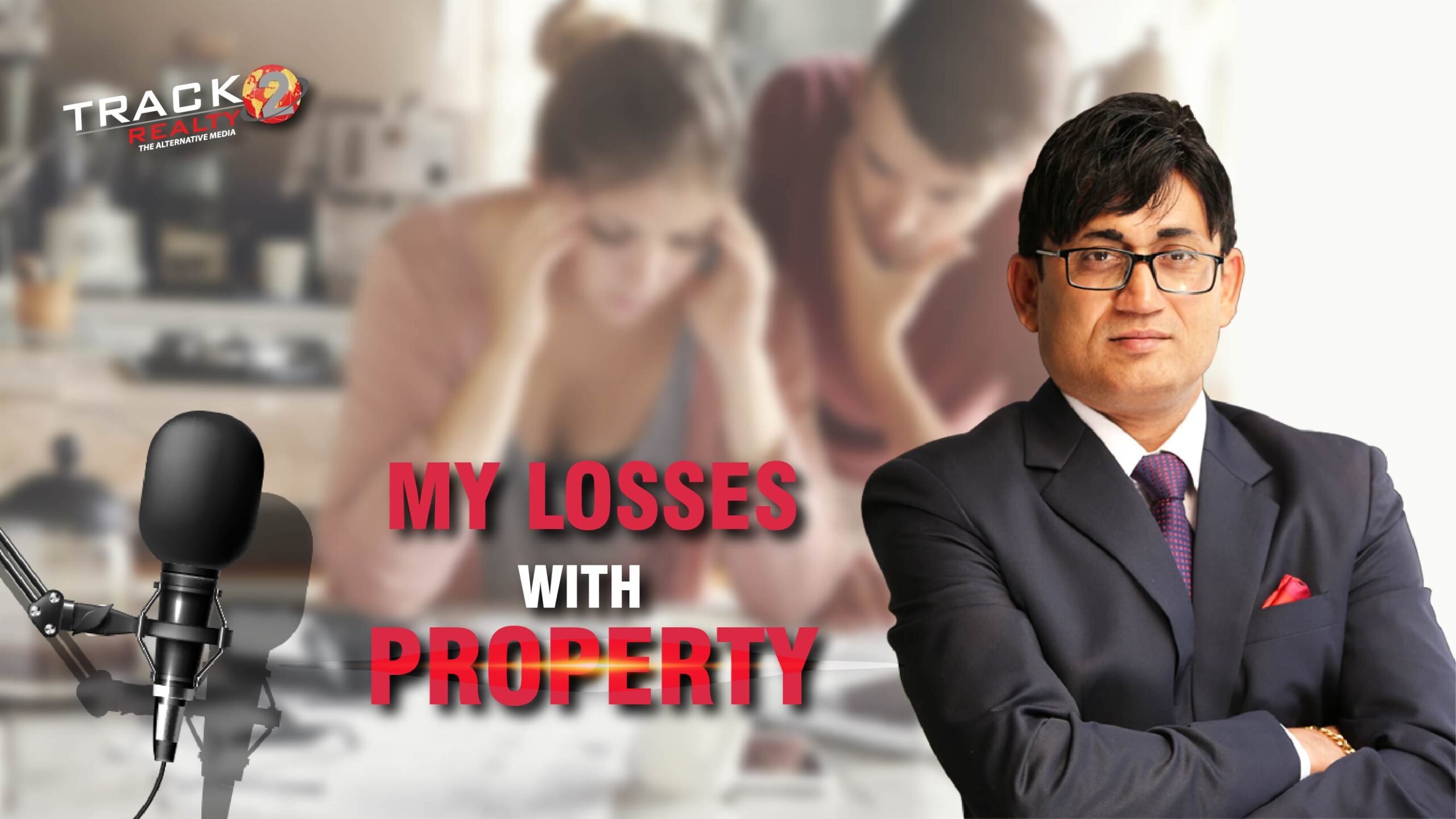If the real estate industry narrative is to be believed, then this festive season has already made headlines with best ever consumer sentiment. The influence peddling of the industry stakeholders has gone to the level that is not only unrealistic but also self-contradictory. Track2Realty finds a wide gap between the reality and the narrative.
It would be a different discussion altogether as to what extent the false narrative actually helps the developers to offload the inventory. The larger issue is whether the developers have managed to weave a story this festive season that could turnaround the “Real Sentiments”.
In a market where the only predominant reality today is job losses & salary cut; a market where an average Indian is reeling under hyper-inflation to just sustain, the buyers are least impressed with the reports of the real estate market peaking to its best-ever glory.
I often get amused when I get into the details of the industry survey that shouts at the top of its voice – “All is Well”. Some of these industry reports claiming the business to be witness to higher consumer sentiment are based on the feedback of connected parties like developers, banks, financial institutions and private equity players. All in all, it’s a family cycle where everyone is desperate to beg, borrow or steal for sale. The most important stakeholder – the home buyer – whose sentiment is being tracked is better left out in this mutual appreciation club of vested interests.
Let’s first take a look at some of the narratives that is being set to impress the home buyers this festive season:
Consumer sentiment all time high this festive season
The question is how the data is derived to carry home the point that consumer sentiment is all time high. In India, housing is such an aspirational product that ask any Indians where one would like to have a house of one’s own and there won’t be an answer in denial. The question here is not to have an aspiration to buy but the affordability to have it.
Most of the reports talk about real estate in the Top 10 cities. It goes without saying that in a country where income to property prices is so skewed up that the majority of home buyers fall under the top 10% of the demographic profile. This is the class that is under tremendous pressure post Covid for reasons ranging from job losses to salary cuts, and hyper-inflation to potential future economic shocks.
Sales have picked up to 80-90% this festive season
When the reports of high sales figure are taken on the sheer face value, it makes an impressive headline. However, statistics only tell half the story if not collated with the right economic perspective. What is the base level that is showing housing growth up to 80-90%? The comparative scale is the sales number of the same quarter last year. Right? We all know how the second wave of pandemic had put festive celebrations on hold last year. So, any miniscule growth looks as phenomenal growth on the given scale.
Since the life cycle of an average real estate project is no less than 5 years, sales benchmarking has to follow the same pattern. The sales statistics won’t give a clearer picture unless it is collated on the scale of average sales in the last five years. But then real estate reports conceal more than they reveal, since the reports are released by the industry stakeholders only.
Sales numbers speak for themselves
It is true that the numbers don’t lie. But the numbers could easily mislead in a business where data transparency has always been an issue. What is the basis of sales growth is the number of property registrations. Right? Now is there any differentiation of data to define what is a primary market sale and what property is exchanging hands in the secondary market?
Post Covid, with job losses and salary cuts leading to imbalance of Debt to Income ratio of home buyers, there has been a number of distress sales in the secondary market. A home buyer unable to sustain the loan EMI finds it easy to get rid of the long-term financial liability in an uncertain economic outlook. But the property registration would showcase this distress sale as just the sales number to mislead the market.
People want bigger home; commercial property also shown signs of green shoot
Isn’t this narrative self-contradictory? Either Work From Home is leading to the demand of bigger homes or people are returning back to the offices. How is it possible that someone working from home is also a catalyst to the demand for more office space? This could only be possible in an economy where the job growth is also phenomenal. But the ground reality is that quarter-on-quarter the job degrowth is just depressing.
Irony is that within the large universe of Indian real estate every stakeholder sets his own narrative. For a commercial developer, the agenda is way too different from the residential builder. It is not a mutual fund kind of linear business where the leading players would put their money together to create a narrative of “Mutual Fund Sahi Hai.”
Millennials are also buying now
Another interesting narrative is that the global pandemic has taught the importance of one’s own home. The millennials are hence also taking plunge into the home purchase. Sounds good in theory but the real issue is not what you want but what you can afford. Where is the affordability? On the contrary, many of the millennials are finding it tough to sustain themselves in the metro cities. They are rather moving back to their home towns in the new normal of Work From Home. Rentals are hence falling across the major business driven top cities of India.
Real estate market is growing even in Tier-II & III cities
Either the shift of professionals into their home town would be a demand catalyst in the smaller towns or they will buy houses in the metro cities. No one can afford at both places. How is it fueling demand both ways? It’s a classic case of contradictory industry narrative.
In conclusion
It is hence no surprise that within the built environment of the Indian real estate, the narrative is not just false but also contradictory. How on earth could one defend the sales reports of various stakeholders being way off the target; at times one report claiming 27% sales up while other one calling 9% sales down.
The average home buyer, for whom the narrative is being set, is not amused with the convince or confuse overtones of the developers. That also speaks aloud why the developers fail to even corrupt the home buyers with festive offers anymore. The larger issue today is that of trust & transparency. The right narrative, even if with poor sales claims but explaining the benefits of attractiveness of price point in today’s market, could probably work better for the developers this festive season. Till then festive season is only witness to false narrative of the developers.
Ravi Sinha
@Ravitrack2media
Track2Realty is an independent media group managed by a consortium of journalists. Starting as the first e-newspaper in the Indian real estate sector in 2011, the group has today evolved as a think-tank on the sector with specialized research reports and rating & ranking. We are editorially independent and free from commercial bias and/or influenced by investors or shareholders. Our editorial team has no clash of interest in practicing high quality journalism that is free, frank & fearless.
Subscribe our YouTube Channel @ https://bit.ly/2tDugGl





